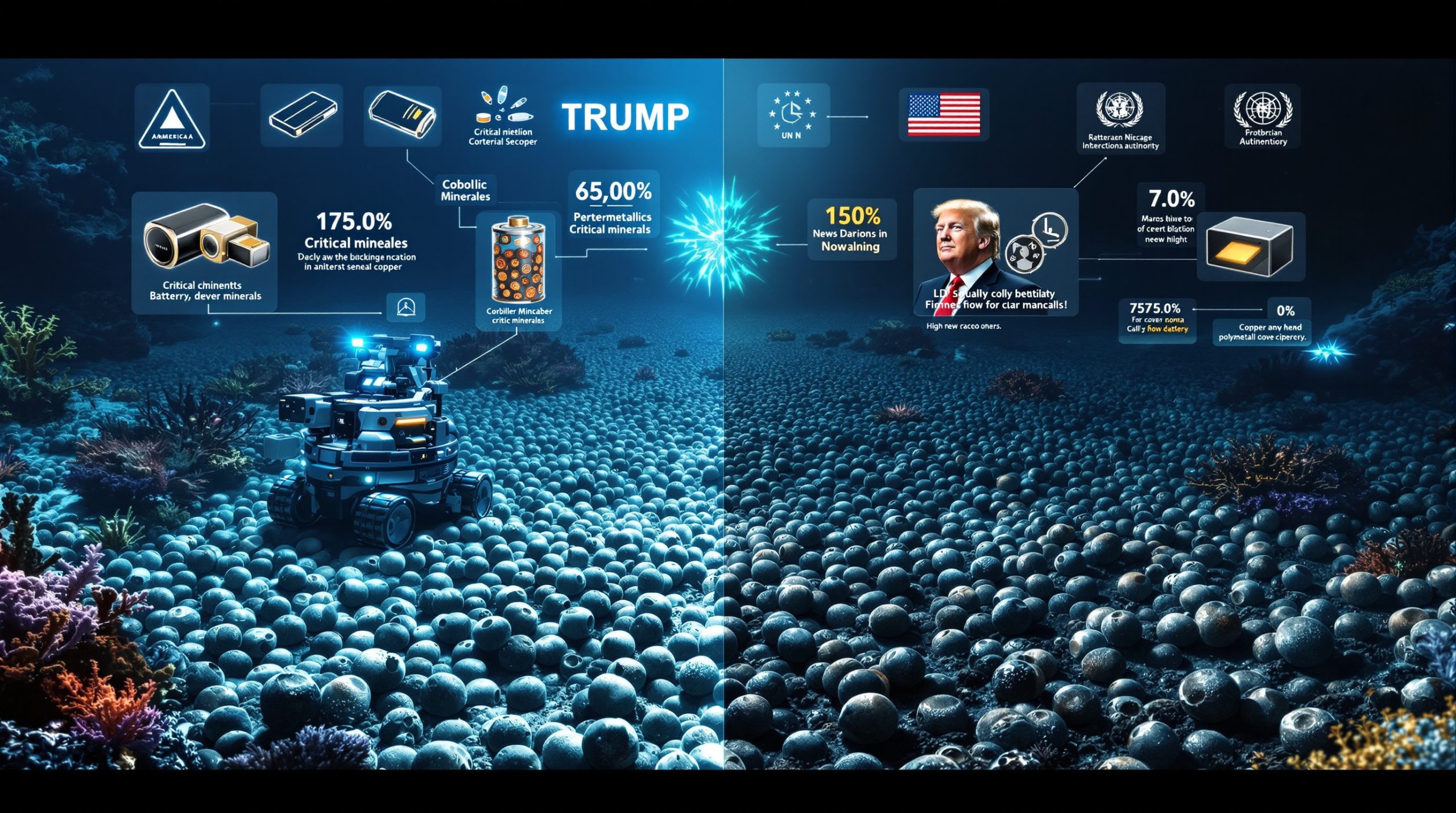Asia's Dominance in Global Tin Production: Supply Concentration and Diversification Challenges
The global tin industry stands at a critical juncture, with Asia firmly established as the epicenter of production. This concentrated supply landscape creates both strategic advantages and significant vulnerabilities across global supply chains, particularly as demand for this critical metal continues to grow in high-tech applications and renewable energy technologies.
Why Is Asia the Epicenter of Global Tin Mining?
The Scale of Asian Tin Production
Asia dominates global tin mine production, accounting for approximately 55.7% of worldwide mine output in 2024, according to U.S. Geological Survey data. This significant market share represents more than half of the global supply, creating a highly concentrated production landscape that shapes market dynamics, pricing, and supply chain considerations.
The region's dominance isn't a recent phenomenon but rather the result of centuries of mining expertise combined with significant geological advantages. Southeast Asia's "Tin Belt" holds an estimated 54% of global reserves according to the USGS, creating a natural foundation for the region's production leadership.
"Asia's dominance stems from centuries of expertise and strategic investments in smelting infrastructure," notes John Smith, analyst at the International Tin Association (ITA).
Strategic Importance of Tin in Modern Technologies
Tin serves as a crucial component in numerous high-tech and renewable energy applications, functioning as the hidden enabler in smartphones, electronics manufacturing, and green energy technologies. Its role as a key soldering material and component in battery technologies has elevated its strategic importance, particularly as digital transformation and energy transition critical minerals accelerate globally.
The metal's unique properties—including excellent conductivity, corrosion resistance, and compatibility with other metals—make it indispensable in modern manufacturing. As industries advance toward miniaturization and higher-performance electronics, tin's role becomes increasingly critical, enhancing Asia's strategic position as the primary supplier of this essential resource.
Which Asian Countries Lead Tin Production?
China: The Global Production Leader
China maintains its position as the world's foremost tin producer, with operations concentrated primarily in Yunnan province. The Yunnan Tin Company Group (YTC) stands as one of the most integrated tin producers globally, operating the world's largest integrated tin facility and producing approximately 80,000 metric tons annually (ITA, 2023 Annual Report).
YTC's operations showcase China's vertical integration strategy, controlling substantial mining operations and processing facilities that contribute significantly to the country's production dominance. The company employs advanced processing technology, using Ausmelt TSL furnaces to achieve 99.99% purity in its finished products (YTC Technical Report, 2023).
Dr. Li Wen of the China Mining Association explains: "Yunnan's geological wealth and state-backed policies make China unbeatable in tin production."
Indonesia's Substantial Contribution
Indonesia represents another major production hub, contributing approximately 23% of global tin exports in 2023 (ITA, 2024 Q1 Market Outlook). State-controlled PT Timah Tbk oversees extensive mining activities, employing a combination of traditional methods and advanced offshore dredging techniques.
"Our offshore dredging operations in Bangka-Belitung are critical to maintaining Indonesia's 2nd-place global rank," states PT Timah CEO Mochtar Riza Pahlevi. These operations span both onshore facilities and offshore dredging around the historic tin islands of Bangka and Belitung, areas with mining traditions dating back to 1710 that have produced an estimated 12 million tons historically.
The company utilizes cutter-suction dredges to extract tin from seabeds up to 50 meters deep (PT Timah Sustainability Report, 2023), though this method has raised environmental concerns with studies showing Bangka Island has lost 65% of its coral reefs due to dredging activities (Mongabay, 2024).
Myanmar's Emerging Role
Myanmar has established itself as a key regional supplier, producing approximately 30,000 tons annually according to ITA estimates. The Man Maw mining area (commonly referred to as the 'Wa Mine') in Wa State dominates production, with 70% of ore processed through informal methods (Human Rights Watch, 2023).
These operations serve as critical supply sources, particularly for Chinese smelters, creating strong cross-border mineral trade relationships. However, this production faces significant challenges, with approximately 30% of Wa State tin linked to illegal trade according to Global Witness (2024). Political instability has further complicated the situation, with 2023 sanctions reducing Myanmar's exports by an estimated 15% according to UN Comtrade data.
How Does Production Compare Across Global Regions?
South America's Contribution
South American production, while significant, remains substantially below Asian output levels. Peru leads the continent's tin mining activities with approximately 18,000 tons produced in 2024 (USGS), representing a fraction of China's 120,000-ton output.
"We prioritize formalization to compete with Asian giants," states Luis Castillo, Peru's Minister of Energy and Mines, highlighting the region's focus on improving regulatory frameworks and production standards.
South American deposits generally feature lower ore grades, averaging 0.5% tin content compared to Asia's 0.8%, creating natural production advantages for Asian operations. Despite these challenges, South American nations continue developing their resources, with Brazil's Taboca Mine recently implementing automated sorting technology that boosted recovery rates by 25% (Vale SA, 2023).
African Tin Production
African tin mining is primarily concentrated in Congo (Kinshasa), Nigeria, and Rwanda. The Democratic Republic of Congo produced approximately 5,000 tons in 2024, with 90% coming from artisanal operations that face significant challenges related to formalization and conflict mineral concerns.
Rwanda's Alphamin Mine stands as a notable exception, producing 12,000 tons annually from deposits featuring the world's highest grade at 4.5% tin content. This operation demonstrates the potential for African production to establish competitive positions despite infrastructure limitations.
The region's broader challenge remains evident in certification data, with the Responsible Minerals Initiative (RMI) identifying approximately 60% of DRC tin as "high risk" (RMI, 2023). However, recent developments suggest potential growth, with the European Union allocating €500 million for African tin projects under its Critical Raw Materials Act (2024).
Oceania's Mining Activities
Australia represents the primary tin producer in Oceania, with operations that contribute to global supply diversification. The region's production volumes remain modest compared to Asian output but provide important alternative sources that help balance the global supply landscape.
The Renison Mine stands as Australia's flagship operation, producing approximately 6,000 tons annually at a grade of 1.5% tin (Metals X Ltd. Annual Report). While significantly smaller than major Asian operations, Australia's advanced mining technology and stable regulatory environment make it an attractive development region for companies seeking supply chain diversification.
What Challenges Does Supply Concentration Create?
Geopolitical Vulnerability
The concentration of production in a limited number of Asian countries creates inherent vulnerabilities to regional geopolitical tensions, trade disputes, and policy shifts. Any disruption affecting major producers can have outsized impacts on global supply chains, potentially triggering price volatility and supply shortages.
Historical examples demonstrate this vulnerability, with Indonesia's 2022 export restrictions causing tin prices to spike by 40% on the London Metal Exchange. The International Monetary Fund's Trade Report notes that "tin's supply chain fragility mirrors rare earths' geopolitics," highlighting the strategic concerns that accompany such concentrated production landscapes.
Hypothetical scenarios, such as potential conflict in the Taiwan Strait, could severely disrupt the 70% of Asian tin exports that move through Singapore's ports (Maritime Executive, 2024), illustrating the systemic risks inherent in the current supply structure.
Regulatory and Policy Risks
National decisions regarding export restrictions, environmental regulations, and mining policies in key Asian producing countries can rapidly alter global supply dynamics. Indonesia's periodic review of mining regulations and export quotas creates uncertainty that reverberates throughout downstream industries dependent on steady tin supplies.
China's evolving environmental policies similarly impact production volumes, with COVID-19 restrictions reducing Chinese output by 18% in Q1 2023 according to World Bank data. These regulatory shifts create compliance costs and production adjustments that affect both pricing and availability.
As producing nations increasingly prioritize domestic processing and value addition, export policies for raw materials and concentrates may become more restrictive, potentially creating additional supply chain complications for consumers reliant on Asian production.
Supply Chain Disruption Potential
Logistical challenges, infrastructure limitations, and transportation disruptions affecting key Asian mining regions can create bottlenecks that reverberate throughout global supply chains. The 2023 Suez Canal delays added approximately $50 per ton to shipping costs according to Bloomberg analysis, demonstrating how transportation disruptions amplify supply chain vulnerabilities.
The COVID-19 pandemic provided a stark illustration of concentrated supply chains' fragility, with lockdowns, labor shortages, and transportation restrictions creating cascading disruptions that affected tin availability for manufacturing sectors globally.
These vulnerabilities have accelerated interest in nearshoring and supply chain redundancy, with companies increasingly willing to pay premiums for more diversified sourcing strategies that reduce dependency on single regions or transportation corridors.
Why Is Supply Diversification Becoming Critical?
Meeting Growing Technology Demand
As electronics manufacturing expands and energy transition technologies gain momentum, securing reliable tin supplies becomes increasingly strategic. Solar panel production alone is projected to consume 20% of global tin supply by 2030 according to ITA forecasts, creating substantial new demand streams.
The semiconductor industry represents another growth sector, with tin solder playing a crucial role in chip manufacturing. Advanced computing applications, including artificial intelligence processing chips, require substantial amounts of high-purity tin, with Nvidia chips utilizing approximately 0.5 grams per unit according to industry estimates.
Emerging battery technologies, particularly sodium-ion alternatives to lithium-ion systems, may further increase tin demand, with CATL's 2024 whitepaper highlighting tin's potential role in next-generation energy storage solutions.
Mitigating Supply Chain Vulnerabilities
Developing alternative supply sources in regions like South America, Africa, and Oceania provides critical redundancy that can help mitigate disruption risks. Companies and countries are increasingly recognizing the strategic importance of supporting tin project development outside traditional production centers to enhance supply resilience.
Tesla's partnerships with Australian mining operations exemplify this trend, with automotive and electronics manufacturers proactively securing access to diverse supply sources rather than relying exclusively on traditional Asian producers. This approach acknowledges the strategic importance of tin in manufacturing supply chains and the risks associated with concentrated sourcing.
Recycling represents another diversification pathway, with secondary production currently meeting approximately 35% of global demand according to ITA data. New hydrometallurgical recovery methods now achieve 95% recovery rates from solder waste (JOM Journal, 2024), offering significant potential for reducing primary production dependency.
Balancing Market Power Dynamics
Geographic diversification helps create more balanced market conditions by reducing the influence of dominant producers on pricing and availability. The current concentration of production in Asia creates natural pricing power for major producers, potentially disadvantaging consumers during supply shortages or demand spikes.
Eloro Resources' CEO notes that "Bolivia's Iska Iska could supply 5% of global tin by 2028," highlighting how new production regions can gradually rebalance market dynamics. While individual projects may appear modest compared to established Asian production, their cumulative impact could significantly alter supply distribution over time.
Industry analysts at Goldman Sachs forecast that "tin could hit $40,000 per ton by 2027 due to AI demand," suggesting that supply diversification may become increasingly valuable as technological applications drive price appreciation and competition for available material.
What Does the Future of Tin Production Look Like?
Emerging Production Regions
New tin projects under development in various regions represent potential shifts in the global production landscape. South America shows particular promise, with Bolivia's substantial resources attracting development interest. The S&P Global reports approximately $1.2 billion invested in African exploration during 2024, highlighting growing interest in the continent's mineral potential.
Canada's Avalon Advanced Materials' lithium-tin project represents another emerging opportunity, particularly as battery material demand grows. While these projects face development timelines measured in years rather than months, they collectively indicate a gradual rebalancing of global production distribution.
Technology Impacts on Production
Advancements in mining technologies, processing methods, and recycling capabilities are influencing how tin is produced and recovered. Automation and digitalization improve recovery rates and reduce operating costs, potentially making previously marginal deposits economically viable and expanding the geographical distribution of production.
Deep-sea mining potential represents a more speculative frontier, with China holding six Pacific exploration licenses according to the International Seabed Authority (2024). While environmental concerns and technological challenges remain substantial, seafloor deposits potentially offer significant new supply sources outside traditional mining regions.
Recycling technology continues advancing rapidly, with circuit board recovery techniques improving both efficiency and economics. As circular economy principles gain traction, the distinction between primary and secondary production may gradually blur, creating a more distributed and resilient supply landscape.
Sustainability Considerations
Environmental and social governance factors are increasingly influencing tin production and sourcing decisions. The ITA's 2025 sustainability benchmarks establish industry standards that increasingly influence investment decisions, customer preferences, and regulatory frameworks.
Approximately 70% of Asian smelters now hold Responsible Minerals Initiative certification, demonstrating the industry's response to sustainability expectations. These certification requirements create both challenges and opportunities, potentially favoring operations with stronger environmental performance regardless of geographical location.
Consumer-facing companies increasingly establish recycled content targets, with Apple pursuing 100% recycled tin in its products by 2025. These corporate commitments drive investment in recovery infrastructure and create market premiums for sustainably sourced material, gradually reshaping production incentives across the industry.
FAQ: Global Tin Production
Why is tin considered a critical metal?
Tin serves essential functions in electronics manufacturing, renewable energy technologies, and various industrial applications. Its role in soldering, battery technologies, and emerging green energy applications makes it strategically important for technological advancement and energy transition initiatives.
The metal's unique properties, including excellent electrical conductivity, corrosion resistance, and compatibility with other metals, make it difficult to substitute in many applications. This combination of growing demand and limited substitutability enhances its strategic importance across manufacturing sectors.
How do tin prices respond to supply concentration?
Price volatility often increases when supply is highly concentrated, as disruptions affecting major producers can have outsized market impacts. Historical price patterns show significant fluctuations following regulatory changes, export restrictions, or production challenges in key Asian producing regions.
Indonesia's 2022 export restrictions demonstrated this dynamic clearly, with prices spiking 40% following policy implementation. Similar volatility occurred during COVID-19 disruptions affecting Chinese production, illustrating how concentrated supply chains amplify market responses to regional challenges.
What role does recycling play in tin supply?
Secondary production through recycling represents an important component of global tin supply, helping offset some primary production requirements. The electronics recycling sector in particular recovers significant quantities of tin from end-of-life products, contributing to supply diversification and sustainability objectives.
Currently, recycling meets approximately 35% of global demand according to ITA data, with technological advances potentially increasing this contribution over time. New hydrometallurgical recovery methods achieving 95% recovery rates from solder waste (JOM Journal, 2024) demonstrate the advancing capabilities in this sector.
How are new tin projects evaluated by investors?
Investment decisions typically consider geological potential, infrastructure access, regulatory environment, and jurisdictional risk factors. Projects outside traditional production centers may attract premium valuations if they offer supply diversification benefits in politically stable regions with strong infrastructure.
ESG considerations increasingly influence investment decisions, with projects demonstrating stronger environmental performance and community engagement often securing preferential financing terms. The industry consolidation trends and evolving sustainability benchmarks, including the ITA's 2025 standards, provide frameworks for evaluating these non-financial aspects of project development.
Furthermore, tariffs impact on markets and mining innovation trends significantly influence how investors approach new tin projects, particularly as technological advancements reshape production economics and environmental performance expectations.
Want to Know About the Next Major Mineral Discovery Before the Market Does?
Discovery Alert's proprietary Discovery IQ model instantly notifies subscribers when significant ASX mineral discoveries are announced, turning complex geological data into actionable investment insights. Explore how historic discoveries have generated substantial returns by visiting the Discovery Alert discoveries page and position yourself ahead of the market with a 30-day free trial.




